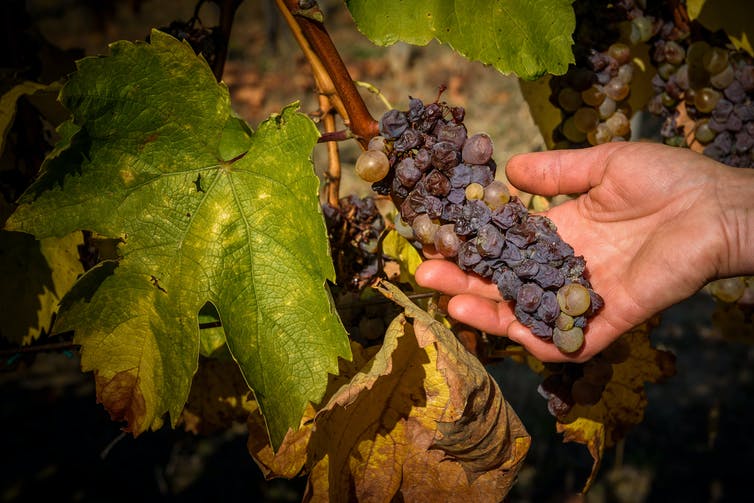Would you like to try an apple covered in a veil of white mold? Or drink a wine made from moldy grapes? Furthermore, would she pay for it?
Molds, also called filamentous fungi, are multicellular eukaryotic microorganisms. We usually think that its presence in food indicates that it has gone bad and we should throw it away. However it is not always so.
How important is the presence of mold in food?
When we see mold on food, we tend to think that it is spoiled and should not be eaten. They alter the taste, smell and texture. Ingesting them can be dangerous to health due to the possible presence of mycotoxins.
Bacteria and yeasts are frequently used in food production. This is how wine, beer, yogurt, cheese, bread, etc. are obtained. The use of molds in food production is almost anecdotal.
Some cheeses they owe their peculiar flavor to the presence of moulds. This is the case of Roquefort, Cambembert, Cabrales or Valdeón, for example.
They are also used in the preparation of some Asian dishes such as Tempeh, soy sauce and miso.
Molds are also involved in the manufacture of some beverages, such as sake.
Going back to the initial question, would you like to try a apple covered in a veil of white mold?
Moldy dishes in fancy restaurants
In recent years several luxury restaurants have included in their menu dishes made with mold.
One of the most used molds is Rhizopus oryzae, which is also involved in the production of sake. Others have also been used, such as Aspergillus awamori, Penicillium candidum Y Penicillium roquefortii.
The use of these microorganisms for cooking is complex and it is necessary to control numerous factors so that the result is adequate.
Publications in scientific magazines Y Congresses on Science and gastronomy collect innovations in this field.
Production of alcoholic beverages
The molds are also used in the production of wine, either from rice or grapes.
Among the rice wines, the sake and the mirin.
Some well-known wines, such as the DO Sauternes and the Hungarian Tokaji Aszú wine, are made using grapes infected by a fungus, Botrytis cinerea.
infection by botrytis It can come in two forms: gray rot and noble rot. Gray rot can ruin the harvest, but noble rot will make excellent wines.
Noble rot occurs in areas with very specific microclimates, and not every year. The fungus dries the grape, concentrating the sugars. But that also decreases performance. One vine is normally considered to produce an average bottle of wine. In the case of those infected by this fungus, the yield is one glass instead of one bottle.
Harvesting grapes is complex, since the fungus does not affect all clusters equally. To achieve the appropriate proportion of affected grapes, the harvest is done in successive passes. In some cases, up to ten successive harvests are necessary to achieve the desired effect.

Shutterstock / Szilard Csaki
Safety of these foods
The preparation of some of the foods we have described carries risks. That was the case for one guy from Tempeh (tempeh bong krek) that was traditionally prepared in Java. It used to be contaminated with toxin-producing bacteria, and its consumption has been associated with the death of more than a thousand people. Its production has been officially prohibited since 1988.
doWhen is it considered safe? use a microorganism to produce food? This concept has recently appeared in legislation. A safe use is considered when the microorganism has been used to produce food consumed by a human population for several generations. In other words, it must be shown that its consumption by many people over several generations has not caused health problems.
Restaurants that prepare moldy dishes have laboratories where they check that they are safe and optimize the process. It is not convenient to try to repeat these recipes at home, since contamination can occur that could endanger our health.
Maria Teresa Weaver JuncoFull Professor of Microbiology, University of Las Palmas de Gran Canaria
This article was originally published on The Conversation. read the original.